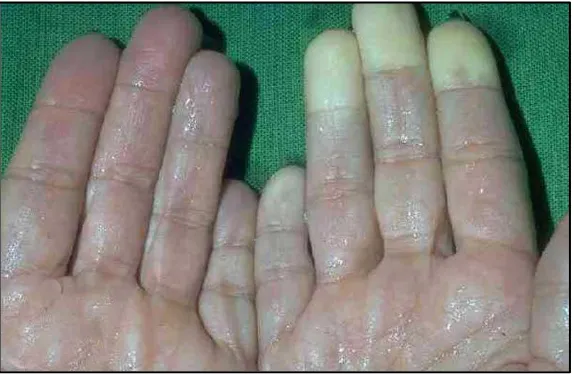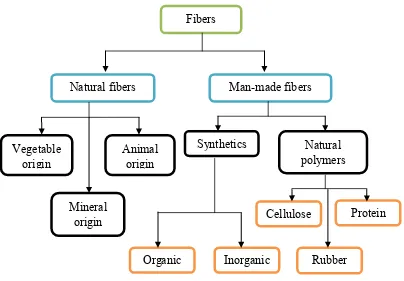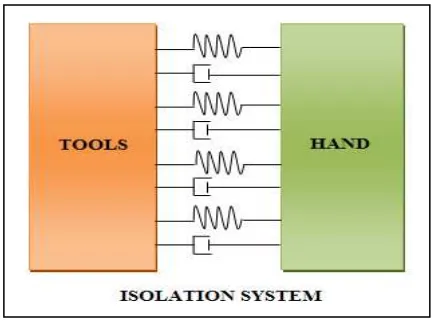UNIVERSITI TEKNIKAL MALAYSIA MELAKA
THE USE OF PADDY STRAW FIBER AS AN ADDITIONAL
DAMPER TO REDUCE VIBRATION TRANSMISSIBILITY
FROM HAND-HELD POWER TOOLS
This report submitted in accordance with requirement of the Universiti Teknikal Malaysia Melaka (UTeM) for the Bachelor’s Degree in Mechanical Engineering
Technology (Maintenance Technology) (Hons.)
by
MARYAM HARYATI BINTI ABDUL RAMAN B071110161
920920105414
UNIVERSITI TEKNIKAL MALAYSIA MELAKA
BORANG PENGESAHAN STATUS LAPORAN PROJEK SARJANA MUDA
TAJUK: The Use of Paddy Straw Fiber as an Additional Damper to Reduce Vibration Transmissibility from Hand-held Power Tools
SESI PENGAJIAN: 2014/15 Semester 1
Saya MARYAM HARYATI BINTI ABDUL RAMAN
mengaku membenarkan Laporan PSM ini disimpan di Perpustakaan Universiti Teknikal Malaysia Melaka (UTeM) dengan syarat-syarat kegunaan seperti berikut: 1. Laporan PSM adalah hak milik Universiti Teknikal Malaysia Melaka dan penulis. 2. Perpustakaan Universiti Teknikal Malaysia Melaka dibenarkan membuat salinan
untuk tujuan pengajian sahaja dengan izin penulis.
3. Perpustakaan dibenarkan membuat salinan laporan PSM ini sebagai bahan pertukaran antara institusi pengajian tinggi. atau kepentingan Malaysia sebagaimana yang termaktub dalam AKTA RAHSIA RASMI 1972)
(Mengandungi maklumat TERHAD yang telah ditentukan oleh organisasi/badan di mana penyelidikan dijalankan)
( )
DECLARATION
I hereby, declared this report entitled “The Use of Paddy Straw Fiber as an Additional Damper to Reduce Vibration Transmissibility from Hand-held Power
Tools” is the results of my own research except as cited in references.
Signature : ……….
Author’s Name : MARYAM HARYATI BINTI ABDUL
RAMAN
APPROVAL
This report is submitted to the Faculty of Engineering Technology of UTeM as a partial fulfillment of the requirements for the degree of Bachelor of Mechanical Engineering Technology (Maintenance Technology) (Hons.). The member of the supervisory is as follow:
i
ABSTRAK
ii
ABSTRACT
iii
DEDICATION
The hardship on executing this project is dedicated to my beloved parents, family, my supervisor, Mr Ahmad Yusuf Bin Ismail, and my best friends for the support and indulgence of easing till the completion of this project. This project also is dedicated
iv
ACKNOWLEDGEMENT
I would like to express my gratitude to my supervisor, Mr. Ahmad Yusuf Bin Ismail, whose expertise, understanding, and patience, added considerably to my graduate experience. I appreciate his vast knowledge and skill in many areas (e.g., vision, aging, ethics, knowledge in vibration fudamentals), and his assistance in writing reports (i.e., project proposal and this thesis), which increase my confidence level. I would like to thank my colleagues for the assistance in providing all levels of the research project.
vi 4.2 Analysis of Percentage Composition Effect on Vibration Signal 47
vii
LIST OF TABLES
2.1 Typical of critical structural parameters for various plant fibers 15 2.2 The availability of natural fiber in India and its applications in 18
building materials
3.1 The percentage composition preparation by its mass 24 3.2 The distribution of mass according to percentage composition 31
by mass for each glove
viii
LIST OF FIGURES
1.1 Hand-arm vibration syndrome 2
1.2 Classification of fibers 3
2.1 Isolation system 8
2.2 Jigsaw 9
2.3 Cordless Drill 10
2.4 Finishing sander 10
2.5 Generic classification of man-made fibers with their codes 13 2.6 Displacement of vibration transmissibility free body diagram 18
3.1 Flow chart of the research 23
3.2 Paddy straw fiber and sponge before cutting process 25 3.3 Paddy straw fiber and sponge after cutting process 26
3.4 Typical fabric gloves 27
3.5 Sewing kits 28
3.6 Preliminary concept design of the vibration damping glove 29 3.7 Sewing method of the additional damper on the glove 30 3.8 The weighing process after inserting raw materials 31 3.9 The process sequences for preparation of the testing glove 32
3.10 Conceptual experimental method 33
3.11 Example of electrical hand saw 34
3.12 PCB accelerometers 35
3.13 Accelerometer basic components 35
3.14 Different type of signal analyzers 36
3.15 Task processing device with the installed software for spectrum 37 analysis
3.16 The assembly of accelerometer and bracket 37
ix
4.2 Vibration level of glove with 20% paddy Straw fiber and 80% 42 sponge for different speed
4.3 Vibration level of glove with 40% paddy straw fiber and 60% 43 sponge for different speed
4.4 Vibration level of glove with 80% paddy straw fiber and 20% 44 sponge for different speed
4.5 Vibration level of different percentage of paddy straw 45 composition at speed ‘c’
4.6 Vibration reduction index of glove with 0% paddy straw and 46 100% sponge
4.7 Vibration reduction index of glove with 20% paddy straw and 47 80% sponge
4.8 Vibration reduction index of glove with 40% paddy straw and 48 60% sponge
x
LIST OF ABBREVIATIONS, SYMBOLS AND
NOMENCLATURE
HAV - Hand Arm Vibration
HAVS - Hand Arm Vibration Syndrome ISO - International Standard Organization VRI - Vibration Reduction Index
VWF - Vibration-induced White Finger
m - Mass
t - Time
k - Spring Stiffness Coefficient
x - Displacement
T - Vibration Transmissibility
c - Damping Loss Factor
- Damping Coefficient Kij - Vibration Reduction Index
- Equivalent Absorption Lenght
- Equivalent Absorption Lenght of the Element i - Equivalent Absorption Lenght of the Element j - Sound Velocity in Air
- Common Lenght of the Junction i-j - Reference Frequency
- Frequency of the Band
1.1 Human Vibration
Human being is exposed to vibrations of one or other sort during the normal day lives such as in buses, train and cars. A large number of people are also exposed to other vibrations during their working day, for example vibrations produced by hand-tools, machinery, or heavy vehicles. Human vibration can be divided into two main vibration which is a whole-body vibration and hand-arm vibration. Both types of human vibration may be either temporary or permanent physical system damage in the case of long term exposure to excessive vibration.
The whole-body vibration is defined as vibration that occurred when a greater part of the body weight is supported on a vibrating surface where at this state the vibration transmission take place (Ismail et al., 2010).Most common case that may give effect regarding the whole-body vibration is a bad sitting position where the vibration transmitted through the seat pan or back rest (Ismail et al., 2010). Factors that affect the body to vibrate are pointed toward the contact area between the body surface and the area of the vibration is produced or having excitation. When the body are in contact with the vibration surface, the transmission of vibration will take place in between this two contact surface. Therefore, the vibration will then being transmitted to the whole body.
The hand-arm vibration is one of the specific and common types of exposure that focus only on vibration transmissibility at the palm of the human hand. This vibration transmissibility exposure will give a result in severe symptoms such as
2
tingling, numbness, and loss of feeling and control in those fingers which are affected (Welcome et al., 2014). This type of vibration exposure is due to a long exposure condition while using the machine that is in contact with the hand. So that the vibration will be transmit from the tools to the palm of the hand where it can give an effect on human nervous system.
1.2 Hand-transmitted Vibration and It’s Effects
Hand-Transmitted Vibration (HTV) is one of the mechanical vibrations arising from powered tools and entering the body at the fingers or at the palm of the hands.Prolonged exposure to the vibration frequency will be harmful and can lead to hand-arm vibration syndrome (HAVS) when using hand-held power tools (Griffin, 1994). A frequently exposure to hand-arm vibration throughout the years can cause permanent physical damage known as “white-finger syndrome” or “Hand-Arm Vibration Syndrome (HAVS)” as shown in Figure 1.1, which can damage nerve of the wrist and/or elbow (Govindaraju et al., 2008). In addition it also can cause non-vascular diseases such as Carpal Tunnel Syndrome (CTS) (National Institute for Occupational Safety and Health, 1988).
3
4
1.3 Natural Fibers as an Additional Damper
Figure 1.2: Classification of fibers
Damping can be defined as the energy dissipation properties of a material or system under continues stress that applied. It is the conversion of mechanical energy into thermal energy. The amount of energy dissipated is a measure of the material’s damping level. The damping system is important in industrial application as it can reduce or suppress the vibration transmission from one part to another part of the body system. Choosing suitable materials for certain system should be considered as an important step in producing a good quality product according to their functions. In this study, natural fiber is selected as vibration damping materials for producing a new vibration damping gloves as an approach for industrial application.
Natural fibers can be divided into three main classifications which are vegetable origin, animal origin and mineral origin. Natural fibers from vegetable fibers are obtained from the various parts of the plants. In this research, paddy straw fibers will be use as a raw material and additional damper in reducing vibration transmissibility. Paddy straw fibers have features such as it is bio-degradable,
5
nonabrasive, abundance and having less health andsafety risk while handling and processing (Abdullah et al., 2011). It is also sustainable, lightweight and environmental friendly to use without affecting the future needs.
The use of natural fibers may improve the quality of damping system on anti-vibration gloves compared with the use of synthetic material which is now widely used in industrial sector. Different types of working activities will need different types of glove used in order to prevent the workers from injuries. Good materials used in producing anti-vibration gloves will give a better performance as it is comfortable and meets the requirements standard.
6
1.4 Problem Statement
Apart from any interest in protecting the hand from abrasion, extreme temperature, chemicals, and wetness, gloves might also assumed to reduce the vibration transmissibility to the hand.The use of gloves has been shown to have both positive and negative influences on hand exertion (Singh and Khan, 2014). Different types of material used for anti-vibration gloves have different level of effectiveness or ability to suppress vibration from transmitted to the human hand.
Most of manufacturers today produced anti-vibration gloves which are made of synthetic material that is not really suitable for human health and environment. In order to find an anti-vibration glove which has a high tendency to suppress the vibration transmissibility, many researchers take their responsibility to do some research regarding the anti-vibration gloves. One of the studies shows the performance of two typical models of vibration-reducing gloves which is a gel-filled glove and an air bladder-filled glove (Welcome et al., 2014).Grip and push forces that applied during working with the hand-held power tools could be one of the cause that affect vibration transmissibility and give a different result of gloves performance (McDowell et al., 2007).
7
1.5 Objective of Research
The objectives of the project:
i. To fabricate the gloves with additional damper of paddy straw fiber and sponge as to suppress the vibration from entering palm of the hand.
ii. To test and analyze the effectiveness of using paddy straw fiber as an additional damping in reducing the vibration transmissibility from hand-held power tools.
1.6 Scope of Research
The scope of the project:
i. Preparation of paddy straw fiber and sponge in different quantities in the form of percentages by mass are used to fabricate the additional damping materials at the palm of the existing gloves in order to modify the gloves. ii. A test is conducted by using the electric hand saw machine that is
experimented with only single axis (z-axis) to avoid variety of result that is unnecessary from the vibration transmissibility in the laboratory monitored with accelerometer and signal analyser.
2.1 Vibration Damping Body
Vibration can be defined as the study of the repetitive motion of objects relative to a stationary frame of reference or nominal position (usually equilibrium). Vibration can be reduced by adding some type of damping. In this case study, the use of vibration damping materials is applied. According to Jones (2001), damping is defined as any mean of dissipating some fraction of each increment of energy which is otherwise added to the system at resonance, by the exciting forces, during each cycle of response. There are two types of damping. One method is active damping, using appropriate sensors to measure the response at each instant and actuators to automatically apply forces which oppose the measured vibration response in a prescribed manner. The other is by passive damping, using materials or devices which, as a result of deformation, apply forces which oppose the velocity motion. The passive damping will be implemented in this study of vibration transmissibility.
Tool manufacturers continue to incorporate new designs to the internal mechanism of tools in order to decrease the vibration that is delivered to the hand during operation. Modification of some tools to minimize tool vibration is not easily resolved through internal tool design. For this reason, vibration damping materials applied between the tool and the hand are a simple alternative. The damping materials may be applied to the area of the tool directly contacted by the operator or in a glove containing a vibration absorbing pad. These interventions are developed specifically to damp vibration but are not necessarily produced and tested under the
9
same work conditions that a company may expose their workers. Therefore, it is important to test the value of the proposed interventions for the specific applications. The physical explanation of the phenomena of vibration transmission from tools to the hand can be illustrated as shown in the figure below.
Figure 2.1: Isolation system
The vibration is transmitted from power tools to the human hand. It is important to know about hand systems response with respect to exposure to vibration. From Figure 2.1, the tools and hand will be separated with the existence of vibration damping materials. This isolation system will be implemented in this study.
2.1.1 Gloves
10
There are several types of gloves with a specific applications used in different sectors. They included chemical resistant gloves, surgical gloves, cold exposure and anti-vibration gloves. The several important considerations about glove characteristics should we look for, which is (1) the gloves offer barrier protection both for the health care worker and the patient to guard against contact with blood, other body fluids, and microorganisms, (2) the glove needs to be comfortable, and (3) the glove cost.
2.1.2 Coating on the Handle
Most of the hand-held power tools that available in market are base on rubber-coated handled. According to Chaturvedi et al. (2012), rubber was also found suitable in reducing vibrations in power tillers out of various interventions of different materials used in the study. There are some examples of hand-held power tools which coated with rubber at the handle as shown in the following Figure 2.2 to Figure 2.4:



